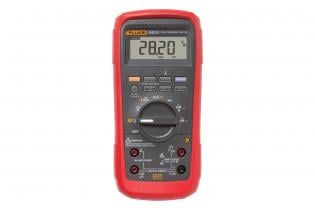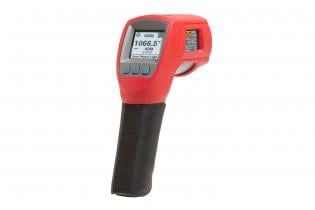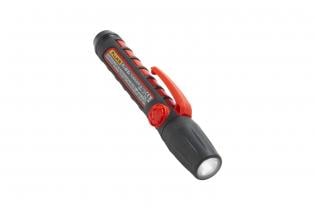Intrinsically safe test tools for hazardous areas
Whenever work is performed in an area where combustible material is present it is essential to take steps to minimize the risk of ignition. Intrinsically safe (EX) tools play a role in these hazardous environments. EX tools reduce the available energy to a level where it is too low to cause ignition.
Have you ever wondered if you're using the right tool for the right job? Fluke offers the world's broadest line of intrinsically safe test tools including digital multimeters, pressure, mA loop and multifunction calibrators, infrared thermometers, and flashlights designed to increase safety without sacrificing performance. Our rugged, reliable tools are designed to go where other tools can't so you can troubleshoot and calibrate more, without sacrificing uptime. These tools are ideal for environments in chemical plants, petro-chemical plants, oil platforms, refineries and other locations where risk of explosion exists.
What organizations are defining intrinsically safe standards?
Intrinsically Safe is a protection method employed in potentially explosive atmospheres. There are no global intrinsically safe standards or certifications, but there are organizations that influence directives in certain world geographies.In Europe, the primary intrinsically safe standard is Directive 2014/34/EU commonly called "ATEX". ATEX is intended to serve as total harmonization directive, laying down essential health and safety requirements or the European Union.
The International Electrotechnical Commission System for Certification to Standards Relating to Equipment for Use in Explosive Atmospheres (IECEx System). The objective of the IECEx System is to facilitate international trade in equipment and services for use in explosive atmospheres, while maintaining the required level of safety.
In the United States Factory Mutual Research is a not-for-profit scientific and testing organization that has set certification guidelines for equipment used in potentially explosive atmospheres.
The NFPA (National Fire Protection Association) 70, National Electrical Code, also known as the NEC, is the basis for all electrical codes in the United States. Classifications and related product markings for hazardous areas are covered in NEC 500 and 505. These are similar to, but not exactly the same as, those used in ATEX.
The Occupational Safety and health administration of the U.S. Department of Labor participates in the US-EU Cooperation on Workplace Safety and Health This is a project of the U.S. DOL, OSHA, and the EU European Agency for Health and Safety at Work. The goal is to promote sharing of information on current safety and health topics of common interest. Intrinsic safety is covered under Regulations (Standards - 29 CFR), Hazardous (classified) locations 1910.307 and 1926.407.
Featured intrinsically safe resources
Fluke 28 II EX Intrinsically Safe Digital Multimeter
The Fluke 28 II Ex digital multimeter is an intrinsically safe digital multimeter designed for...
Fluke 568 Ex Intrinsically Safe Infrared Thermometer
The Fluke 568 Ex Intrinsically Safe Infrared Thermometer is the one product you can use in Class I...
Fluke FL-120 EX Intrinsically Safe Flashlight
FL-120 EX two-power, handheld intrinsically safe flashlight
Fluke FL-150 EX Intrinsically Safe Flashlight
FL-150 EX tri-power, handheld intrinsically safe flashlight
Fluke TL80A Basic Electronic Test Lead Kit
Test leads are an integral part of the complete measurement system and extend the capabilities of...








